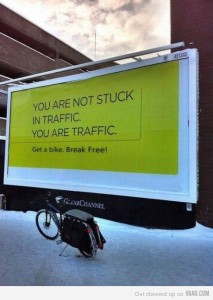Kelly Trach’s blog entry, “Comment, Tumbl, and Tweet Professionally” had some excellent suggestions as for ways to ensure that people respect the online boundary between fun and inappropriate. However, what interested me was the implicit assumption that this only applies to people who are currently employed. Assuming this gives high school students and unemployed university students the impression that they are free to act as they wish with no concern for future repercussions, which is untrue. In reality, each picture uploaded to Facebook is saved, and repercussions can appear at any point in a person’s life.
A fantastic example of this was seen in a recent episode of The Good Wife, where photos from a political candidate’s freshman year of university resurface 20 years later during the campaign. This is a PR advisor’s worst nightmare – the ridicule factor can be one of the most difficult things to combat in a political or marketing campaign. In the case of the episode, the candidate was unable to come back from the ridicule of a photo of him “pleasuring” a plastic Santa Clause. The entire campaign was ruined and his career was over – this is the impact that unprofessional actions can have, even if they are done during a point where the person is not directly employed. It is crucial that students remember this and ensure that they conduct themselves properly not only while working, but in general. Else wise, with Facebook tracking and Googling becoming standard pre-hiring checks, the student could find themselves having serious regrets.
